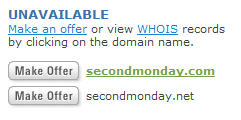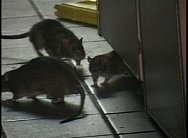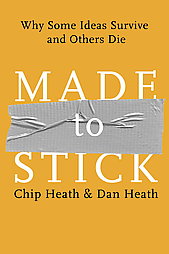Some brands are clearly benefiting from their own online communities. Nike’s community is quite active, with over 57,000 members. The largest Blackberry community has nearly twice that number. Marc Andreessen is betting that more niche brands — as well as sports teams, community groups and hobbyists — will want to reap the same benefits.
I’m thinking he’s onto something, due to the new ways that consumers are interacting with brands, as well as the power of search engines to fuel these connections. It wouldn’t be the first time Andreessen has a winning hunch.
You may recall that in mid-’90, the sweetheart of the internet was Netscape. Marc Andreessen was co-developer of this free web browser. During Netscape’s zenith, he was on the cover of every magazine from Business 2.0 to Time. That’s before Microsoft moved into the browser business, and its Internet Explorer did to Netscape what its Word did to WordPerfect and Excel to SuperCalc. Microsoft has rained on a lot of parades. Andreessen got drenched. But also quite rich.
As reports these past few weeks have declared, he has invested his money in Ning, a way to “launch a social network with a few mouse clicks.”
Ning would take much of the pain out of testing an online community surrounding your brand. But is it a wise decision? Let’s put aside for a moment the legal considerations (liability for bad advice shared on your forum, for instance), as well as the logistics of moderating the thing.
Does this marketing tactic support your brand? I say yes, for the following three reasons:
- Your customers experience your brand but could not care less for your company. As David Raab eloquently put it, “Brands are movie stars. Companies own the theater.” An online community becomes a place in that theater to congregate.
- People will trash talk your brand regardless of whether you host a community sounding board. Sam Decker of Bazaar Voice contends, and I agree, that it’s better to have them do it on your forum than someone else’s. I’ve quoted him speaking about negative user-generated content (UGC) in an earlier post.
- Search engines can’t get enough of the UGC that these forum sites generate. They just love ’em. Isn’t it better for people searching on generic brand features to find content about your brand as opposed to a competitor’s?
Does the prospect of an online forum about your brand scare you? It should. But you need to know more about online communities, and what better way than to launch a simple test? If not for your brand, how about for your church group? Marc Andreessen is preparing a well-stocked marketing laboratory just for you.
Want to check out a sample Ning-driven community? Here’s one on the evolution of broadcast and personal media.
 This week my team is embarking upon yet another “namestorming” exercise, for yet another client whose brand name will be inextricably tied to their domain name. Once again, the process won’t be pretty. It will require lists of hundreds of word combinations. There will be disappointing
This week my team is embarking upon yet another “namestorming” exercise, for yet another client whose brand name will be inextricably tied to their domain name. Once again, the process won’t be pretty. It will require lists of hundreds of word combinations. There will be disappointing 

